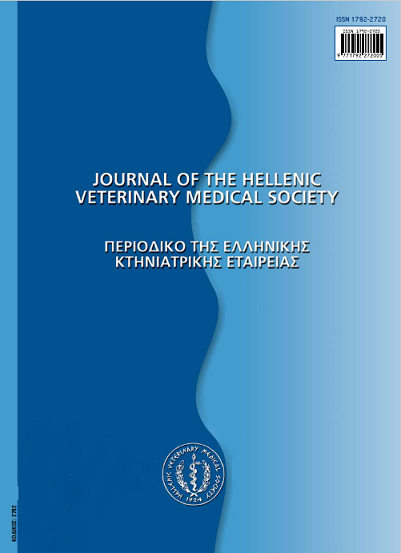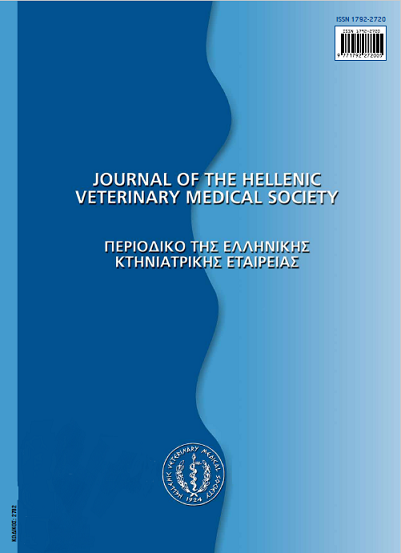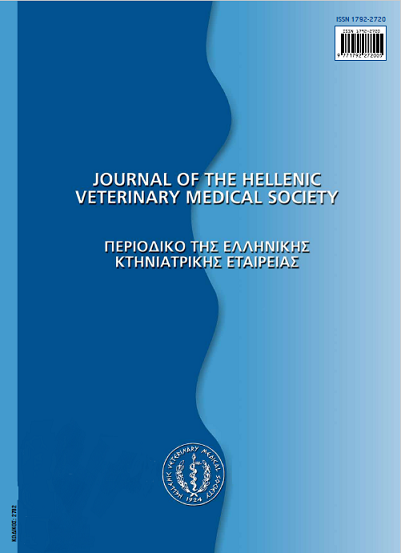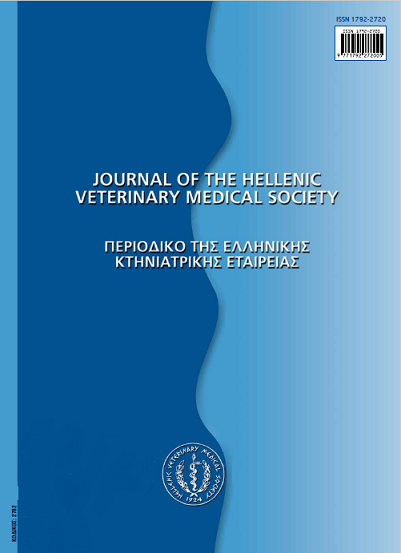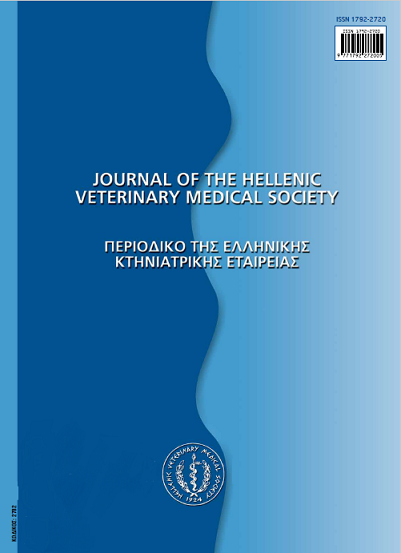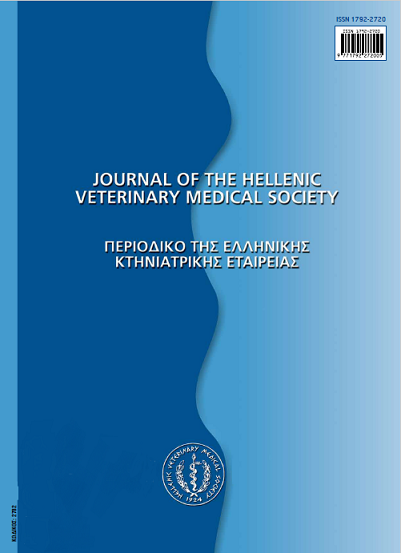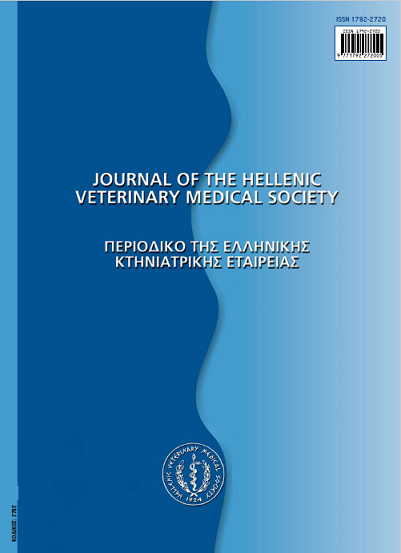Axial pattern skin flaps in cats: 8 cases (2000-2015)

Abstract
Eight female cats of various breeds and median age of 4.5 years, with cutaneous defects in the limbs and trunk which were managed with axial pattern flaps, are described. Skin defects were caused by trauma or tumor excision. The defects were located in the medial aspect of the thigh in 2 cats, the lateral aspect of the thigh in 2, the left axilla in 2, the sternal and inguinal area in 2 and the dorsolateral abdomen and lumbar region in 1 cat. Totally 9 flaps were used including caudal superficial epigastric flap (4), thoracodorsal flap alone (1) or combined with omentalization (1), elbow fold flap and flank fold flap (2). All flaps survived and small dehiscences were found in 2 cats. All cats were healthy after a median follow up time of 13 months. The use of axial pattern flaps is a very effective method for the coverage of large skin defects in cats.
Article Details
- How to Cite
-
GAVRIILIDOU (Ο. ΓΑΒΡΙΗΛΙΔΟΥ) O., PAPAZOGLOU (Λ.Γ. ΠΑΠΑΖΟΓΛΟΥ) L. G., KOUKI (Μ. ΚΟΥΚΗ) M., STRANTZIA (Ε. ΣΤΡΑΝΤΖΙΑ) E., GIANNOULI (Μ. ΓΙΑΝΝΟΥΛΗ) M., MENTZIKOF (Λ. ΜΕΝΤΖΙΚΩΦ) L., & PINOPOULOS (Σ. ΠΙΝΟΠΟΥΛΟΣ) S. (2018). Axial pattern skin flaps in cats: 8 cases (2000-2015). Journal of the Hellenic Veterinary Medical Society, 68(3), 445–454. https://doi.org/10.12681/jhvms.15539
- Issue
- Vol. 68 No. 3 (2017)
- Section
- Research Articles

This work is licensed under a Creative Commons Attribution-NonCommercial 4.0 International License.
Authors who publish with this journal agree to the following terms:
· Authors retain copyright and grant the journal right of first publication with the work simultaneously licensed under a Creative Commons Attribution Non-Commercial License that allows others to share the work with an acknowledgement of the work's authorship and initial publication in this journal.
· Authors are able to enter into separate, additional contractual arrangements for the non-exclusive distribution of the journal's published version of the work (e.g. post it to an institutional repository or publish it in a book), with an acknowledgement of its initial publication in this journal.
· Authors are permitted and encouraged to post their work online (preferably in institutional repositories or on their website) prior to and during the submission process, as it can lead to productive exchanges, as well as earlier and greater citation of published work.



